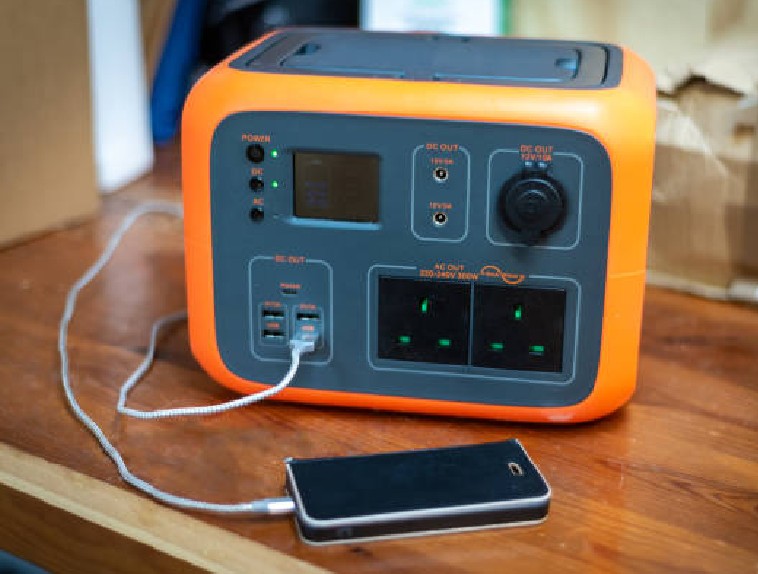
Q. I know cord and plug-connected appliances are tested for leakage current but are hard-wired appliances tested for leakage current, as well?
A. No. Typically, safety standards only require cord and plug-connected appliances to be tested for leakage current. Permanently-connected (hard-wired) appliances are not required to undergo a leakage current test during the UL Certification/Listing process. This is a result of the difference in the reliability of the grounding connection in a cord and plug-connected appliance versus a permanently-connected (hard-wired) appliance. The grounding connection in a permanently-connected appliance is considered to be reliably connected, whereas the grounding connection in a cord and plug-connected appliance may not be reliable. Additionally, some cord and plug-connected appliances are not required to have a grounding means.
Cord and plug-connected appliances
Leakage current is the electric current that can flow through a person upon contact between accessible parts of an appliance and the ground or between accessible parts of an appliance and other accessible parts of an appliance. With that in mind, all electrical appliances may leak some current through user accessible parts. Cord and plug-connected appliances rely on a power supply cord and an attachment plug inserted into a properly wired building receptacle for connection to the power supply as well as connection to the grounding path of the premises wiring system. Some issues may affect the reliability of a cord and plug ground connection to the grounding paths such as damage to the power supply cord or attachment plug, a building receptacle being improperly wired to the grounded premise wiring system, or the lack of a grounding means at the receptacle. Without a proper grounding means, the leakage current will flow to accessible parts of an appliance rather than through the grounding path. Additionally, appliances that are not required to be connected to the grounding path need to be designed in such a way that will limit the amount of leakage current on accessible parts. Because of these potential issues, UL appliance safety Standards require compliance with the leakage current requirements.
The leakage current test requires cord and plug-connected appliances to comply with the maximum leakage current requirements under foreseeable conditions for which a product may be subjected. The conditions include the appliance’s attachment plug connected to a power source with an open ground while connected to correct-polarity and reverse-polarity power connections. In each condition, the maximum leakage current for a 50 or 60 hertz source cannot exceed 0.5 mA for portable two-wire and three-wire cord and plug-connected appliances, and 0.75 mA for three-wire cord and plug-connected fixed or stationary appliances. The test is conducted between accessible parts of an appliance and ground and other accessible parts of an appliance. For nonmetallic enclosures, the same requirements apply with the leakage current measured to aluminum foil wrapped around an enclosure (to mimic the user’s hand in contact with the accessible parts of the appliance). The 0.5 mA level is the level of human perception for electric shock.
For certain types of products that utilize metal sheathed heating elements, the leakage current is permitted to reach 2.5 mA for five minutes during heat up and cool down periods and then return to 0.5 or 0.75 mA levels. In addition, some types of products such as information technology equipment that incorporate electromagnetic interference (EMI) filters may be permitted to reach a maximum of 3.5 mA leakage current. However, the permitted leakage current on a properly operating UL Certified/Listed cord and plug-connected appliance is less than the 4 to 6 mA trip level of UL Certified/Listed Class A GFCI devices.
Permanently connected appliances
Permanently-connected (hard-wired) appliances are intended to be wired using National Electrical Code (NEC) compliant wiring methods by qualified personnel in accordance with the NEC. The equipment grounding connection will either be a direct-wired equipment grounding conductor or another equipment grounding conductor in compliance with NEC 250.118 resulting in a reliable grounding connection.
Permanently-connected appliances have leakage current, too. However, since an appliance is connected in a reliable manner to the grounding path of the premises wiring system in compliance with the NEC, any leakage current present on accessible parts of the appliance will take the lowest impedance path to ground. That path will be through the lower impedance of the equipment grounding conductor instead of the much higher body impedance of a person that may be touching accessible parts of the appliance.











Find Us on Socials